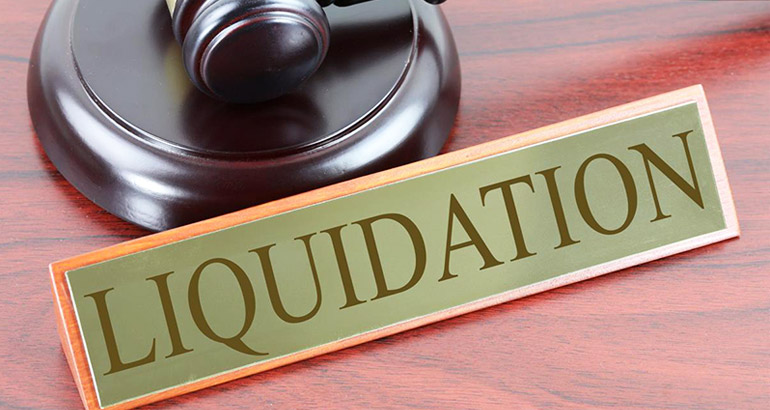The Ultimate Guide To Company Liquidation
The Ultimate Guide To Company Liquidation
Blog Article
More About Company Liquidation
Table of ContentsThe Main Principles Of Company Liquidation The 20-Second Trick For Company LiquidationLittle Known Questions About Company Liquidation.Not known Details About Company Liquidation The Greatest Guide To Company Liquidation
A liquidator is specifically appointed to oversee the winding up of a business's events in order for it to be shut down commonly when the firm is going insolvent. The liquidator is a neutral 3rd party who oversees the sale of company properties in order to repay any kind of outstanding debts.Their role consists of, yet is not restricted to: Unbiased Overseer: A liquidator is charged with serving as an unbiased 3rd party to look after the whole firm liquidation procedure. Develop Statement of Matters: Liquidators have to produce an extensive statement of events document. This file is dispersed to financial institutions, describing the existing monetary status of the business at the time of its liquidation.
After the liquidation of a firm, its existence is erased from Firms House and it discontinues to be a legal entity. If directors browsed the procedure without problem, there would certainly be no charges or individual obligation for firm financial debts expected. Currently, with a fresh start, supervisors can discover new company possibilities, though professional consultation is suggested.
The 8-Second Trick For Company Liquidation
As an example, if more than 90% of all firm investors agree, liquidation can take location on brief notification within seven days, the minimum legal notification for creditors. Nevertheless, normally, the larger the liquidation and the more possessions and capital business has, the longer the procedure will certainly take. 'Do I have to pay to liquidate my firm?', the solution will certainly depend on whether or not your business has any assets leftover when liquidating.

We understand that no 2 firms coincide, which is why we will certainly put in the time to be familiar with your service so we can suggest the most effective strategy for you. We just operate in your benefits, so you can be completely helpful resources confident in the service we provide.
How Company Liquidation can Save You Time, Stress, and Money.
In the UK, there is a set procedure to folding her comment is here or restructuring a minimal business, whether it is solvent or insolvent. This procedure is referred to as liquidation and can only be handled by an accredited insolvency expert (IP) in accordance with the Insolvency Act 1986. There are 4 main kinds of company liquidation procedure: Creditors' Volunteer Liquidation (CVL); Obligatory liquidation; Management; and Members' Volunteer Liquidation (MVL).

In these circumstances, it is very important that the business ceases trading; if business proceeds to trade, the directors can be held directly liable and it can lead to the bankruptcy specialist reporting wrongful trading, called misfeasance, which might result in lawful action. The supervisors designate a bankruptcy practitioner and as soon as this has been concurred and verified, there is a conference with the shareholders.
Certainly, if there are no investors, this action of the process is not essential (Company Liquidation). The IP takes control of the firm and starts the business liquidation procedure. The supervisors are no longer associated with what occurs, consisting of the sale of the company's possessions. Nonetheless, if the supervisors desire any one of the assets, they can notify the IP.
7 Easy Facts About Company Liquidation Described
The main distinction is that the business's creditors used to the court for a winding up order which forces the bankrupt firm into a liquidation process. Lenders take this action as a last hotel due to the fact that they have not received settlement with other kinds of arrangement. The court selects an insolvency practitioner, additionally referred to as an official receiver, to perform the obligatory company liquidation procedure.
This sort of firm liquidation is not voluntary and supervisors' conduct is reported to the UK's Assistant of State once the liquidation procedure has been completed. Any type of supervisor that fails to click to read comply with the IP or has been included in supervisor misconduct, or a deceitful act, might result in major effects.
It is utilized as a means to protect the company from any legal action by its financial institutions. The supervisors of the company agree to make regular repayments to settle their financial obligations over a duration of time.
Company Liquidation for Beginners
This supplies the business with time to establish a plan moving forward to rescue the firm and stay clear of liquidation. Nonetheless, at this moment, directors hand control of the business over to the assigned manager. If a business is solvent but the supervisors and investors want to close the business, a Members Voluntary Liquidation is the right alternative.
The firm liquidation process is managed by a liquidator assigned by the supervisors and investors of the business and they must authorize a statement that there are no creditors continuing to be. The liquidation procedure for an MVL resembles that of a CVL because possessions are understood yet the earnings are distributed to the supervisors and the shareholders of the firm after the liquidator's costs have actually been paid.
Report this page